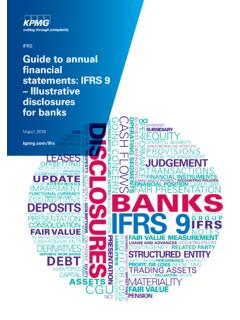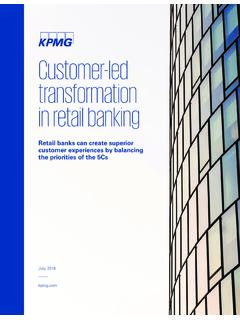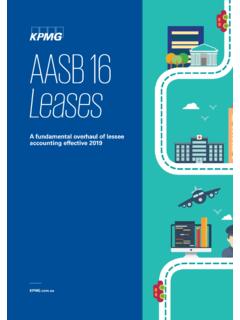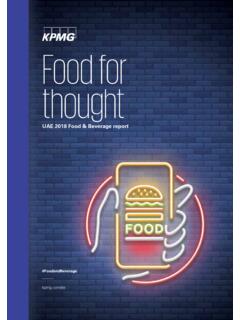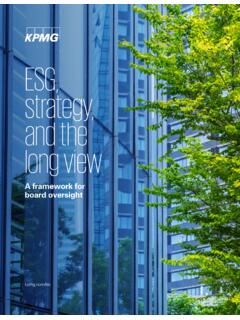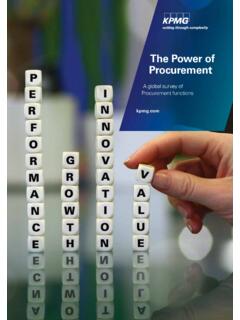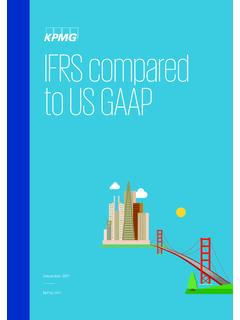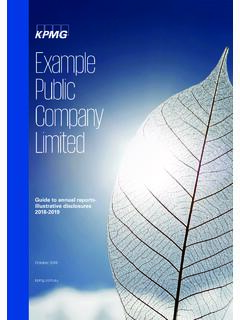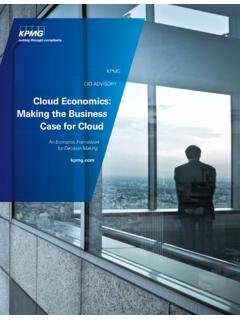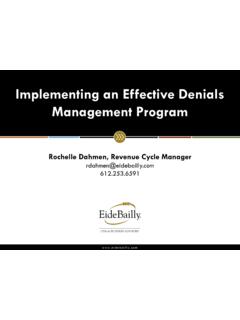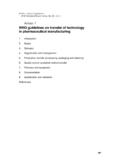Transcription of Managing Trade & Customs in China - assets.kpmg
1 ABCD Managing Trade & Customs in China TAX Managing Trade & Customs in China | 1 Contents A. Managing the China Trade & Customs environment 2 Structure of government agencies Customs environment for G eneral Trade Types of duties and taxes Customs valuation Tariff classification Country of origin The rules of originCustoms environment for p rocessing Trade Import Processing model Contract Processing modelImport and export licensing Foreign exchange controls Export controls Enterprise internal controls Quality and quarantine controls B. Strategic planning, savings and efficiencies 10 Special Customs supervision areas Unbundling Free Trade Agreements Tariff engineering Management of third party service providers First sale for export C.
2 Common t rade & Customs management issues faced by companies 15 Customs Valuation Tariff classification Processing Trade and Customs risk management CIQ risk management D. Why and how we can help 22 E. Our National Trade & Customs network 24 Appendix 25 Contact us 26 Unless otherwise stated, the factual information in this document is derived from publicly-available media or official sources. 2 | Managing Trade & Customs in China Managing the China t rade & Customs environment Customs rules can present complex challenges in any jurisdiction. However, if these rules are understood and managed, they can enable companies to reduce operational risks, manage costs, improve their bottom line and gain favourable recognition in the market.
3 In China , the size of the country can create further uncertainty due to variations in practices or interpretations at different ports of entry. Although these challenges can be met, they do require a commitment of time, resources and strategic planning. This brochure introduces some of the intricacies of import, export and Customs management in China . The starting point is a clear understanding of the regulatory environment, including the structure of related government authorities. From this position, companies can move towards strategic planning options that can significantly enhance their competitiveness. These strategies can be applied either when products are imported into China , or are produced in China using imported components.
4 Structure of related government agencies The General Administration of Customs ( GAC or China Customs ), a ministry level organisation under the State Council, has authority and responsibility over all the Customs districts and offices throughout the People s Republic of China ( PRC or China ). All imports and exports from the PRC are subject to the supervision and control of the GAC. The organisational structure of the GAC can be found as an Appendix on page 24. A 2016 KPMG Advisory ( China ) Limited, a wholly foreign owned enterprise in China and a member firm of the KPMG network of independent member firms affiliated with KPMG International Cooperative ( KPMG International ), a Swiss entity.
5 All rights Trade & Customs in China | 3 There are 46 Customs districts or agencies and offices that report directly to the GAC. These consist of 41 Customs districts, two Customs educational institutions, two supervising offices in Tianjin and Shanghai, and the Guangdong sub-administration of Customs that is in charge of the seven Customs districts located in Guangdong province. On the ground, the GAC administers a total 600 Customs houses or offices and nearly 4,000 Customs clearance control stations manned by around 50,000 personnel (including Customs anti-smuggling police).1 Cross-border Trade with China is normally performed under either General Trade or Processing Trade .
6 General Trade is the regular import channel where Customs duties and import Value Added Tax (VAT) are levied upon importation. Processing Trade , on the other hand, is a special operating model whereby materials to be used in export production are imported into China under bonded status ( free from Customs duties and import VAT). Customs environment for General Trade Basic importation into China requires the payment of the proper duties and taxes. Payment of the correct amount depends on an accurate declaration of a product s value, tariff classification and country of origin. Types of duties and taxesChina Customs levies duties and taxes in accordance with the Customs Law of the PRC and the import/export tariff schedule.
7 Currently, total revenue collected by China Customs comprises mainly the following: Import Taxes Rate Customs duties Varies on type of product Value Added Tax 17% Consumption Tax 5% to 56% depending on product Vessel Tonnage Tax RMB to RMB per ton Following China s accession to the World Trade Organisation (WTO) in 2001, the overall average duty rate in China has been reduced from percent in 2000 to percent in 2010. The average tariff level is percent in 2015. The average tariff level for agricultural products was percent, while that of industrial goods was percent in Customs valuationChina s Customs authorities follow the valuation principles set out in the WTO Agreement on the Implementation of Article VII of the General Agreement on Tariffs and Trade (GATT) or the WTO Agreement on Customs Valuation.
8 The current regulation on Customs valuation in China is the Measures of China Customs on Determination of Dutiable Value of Imports and Exports GAC Decree , which was published on 25 December 2013. According to the measure, the dutiable value of imported goods should be assessed based on the transaction value, which is defined as the complete actual price of the goods, including both direct and indirect payments made by the buyer to the seller. In addition to the above, Measures of China Customs on Determination of Dutiable Value of Bonded Goods for Domestic Sale GAC Decree (the Measures ), was published on 25 December 2013. According to the Measures, the dutiable value of bonded goods for domestic sale should be assessed based on the transaction value, too.
9 1 Source from GAC official website: 2 GAC Guidance for the 2015 Tariff Proposal from official website of Ministry of Commerce: 2016 KPMG Advisory ( China ) Limited, a wholly foreign owned enterprise in China and a member firm of the KPMG network of independent member firms affiliated with KPMG International Cooperative ( KPMG International ), a Swiss entity. All rights | Managing Trade & Customs in China For cases in which there is no transaction value ( no-sale situations), or where the transaction value is deemed unacceptable ( due to conditions attached to the sale of the product), China Customs employs, in hierarchical order, another five methods of appraisement. The table below summarises the WTO appraisement hierarchy: Method 1.
10 Transaction valueGenerally the invoice price with possible adjustments based on Article 8 of the WTO Customs Valuation Agreement value ofidentical goodsComparable volumes and time period value ofsimilar goodsComparable volumes and time period 4. Computed valueCost-plus. May be interchanged with method five 5. Deductive valueResale-minus. May be interchanged with method four valueThe fall-back method is a last resort and gives China Customs greater latitude to assign a basis for Customs duties provided that this is consistent with the WTO principles Customs valuation is a common area of difficulty between Customs authorities and importers. More details about issues regarding this area may be found later in this brochure.
